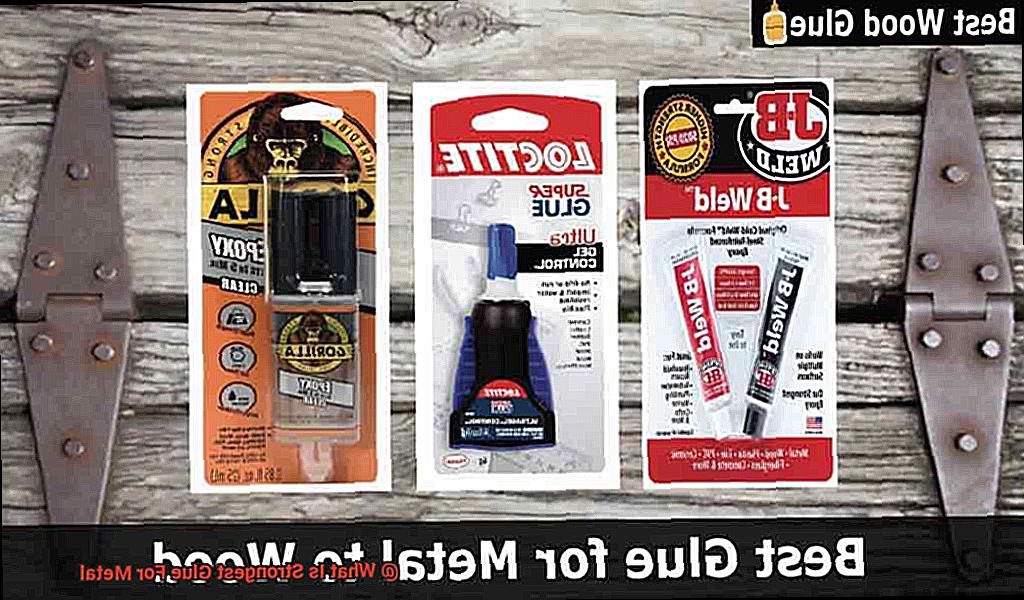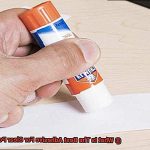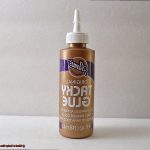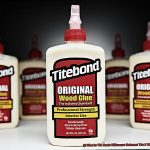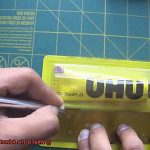Are you tired of struggling with metal bonding?
Well, fret no more because we’ve got the ultimate solution for you. In this blog post, we’re going to dive deep into the world of glues and uncover the secret to achieving super-strong and long-lasting metal bonds.
Whether you’re a DIY fanatic or a pro in need of a reliable adhesive, finding the right glue for metal can be a total game-changer. Picking the strongest glue is crucial because it guarantees that your metal projects will endure even the toughest conditions.
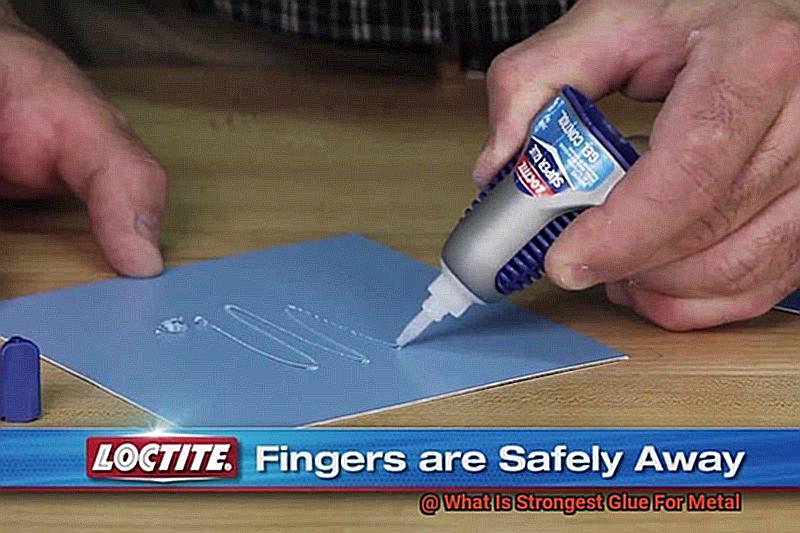
So grab your welding goggles and let’s embark on this sticky journey to metal-bonding success.
Types of Adhesives for Bonding Metal
Contents
- 1 Types of Adhesives for Bonding Metal
- 2 Factors to Consider When Selecting Glue for Metal
- 2.1 Bond Strength:
- 2.2 Temperature Resistance:
- 2.3 Chemical Resistance:
- 2.4 Cure Time:
- 2.5 Application Method:
- 2.6 Type of Metal
- 2.7 Intended Use
- 2.8 Decoding the Secrets of Intended Use
- 2.9 The Alchemical Elixir: Advantages and Disadvantages Revealed
- 2.10 Tales of Magic and Metal: Products for Every Enchantment
- 2.11 Environmental Conditions
- 3 Epoxy Adhesive
- 4 Cyanoacrylate Adhesive (Super Glue)
- 5 Heat-Resistant Adhesives
- 6 Surface Preparation and Its Role in Achieving Strong Bond
- 7 Conclusion
Imagine a world without glue. No sticky notes, no arts and crafts, and no way to bond metal together. Thankfully, we have a wide range of adhesives that can do the job. Let’s take a closer look at the different types of adhesives for bonding metal and discover their super strengths.
Epoxy Adhesives – The Mighty Duo:
Epoxy adhesives are like superheroes when it comes to bonding metal. They consist of two components – a resin and a hardener – that combine forces to create an unbreakable bond. Epoxy adhesives are known for their strength and durability, making them perfect for metals like stainless steel, aluminum, and brass. Just mix the components together, apply the adhesive, and watch it transform into an unyielding force.
Epoxy adhesives offer several advantages. First, they have excellent bonding strength, ensuring a secure connection between metal surfaces. They are also resistant to chemicals, temperature fluctuations, and moisture, making them suitable for various environments.
Additionally, epoxy adhesives provide excellent gap filling properties, allowing for bonding irregular surfaces or filling voids. However, it is important to note that epoxy adhesives require proper surface preparation, as they do not adhere well to oily or dirty surfaces. They also have a longer curing time compared to other types of adhesives.
Cyanoacrylate Adhesives – The Lightning Fast Fixers:
When you need a quick fix for bonding metal, look no further than cyanoacrylate adhesives, also known as super glue. These adhesives work in a flash, forming a strong bond between metal surfaces. However, they may not be as durable as epoxy adhesives, so they’re best suited for smaller objects or temporary fixes.
Cyanoacrylate adhesives offer the advantage of instant bonding. They cure rapidly, allowing for quick assembly and repairs. They are also easy to use and require no mixing. Additionally, cyanoacrylate adhesives have good resistance to temperature and moisture.
However, they may not withstand heavy loads or extreme conditions, and their bond strength can be affected by surface contaminants. It is also important to handle cyanoacrylate adhesives with care, as they can bond skin together.
Polyurethane Adhesives – The Resilient Warriors:
Polyurethane adhesives are the champions of flexibility and resistance to impact and vibration. These adhesives can bond various metals, including steel, aluminum, and copper, while also withstanding moisture in outdoor applications. Their resilience makes them ideal for projects that require some wiggle room.
Polyurethane adhesives offer several advantages. They have excellent flexibility, allowing for the expansion and contraction of bonded metal parts.
They also provide good resistance to impact and vibration, making them suitable for applications subject to movement or stress. Polyurethane adhesives exhibit good resistance to water and weathering, making them ideal for outdoor use.
However, they have a longer curing time compared to other adhesives, and surface preparation is crucial for achieving a strong bond.
Structural Acrylic Adhesives – The Tough Protectors:
When it comes to bonding metals in structural applications, structural acrylic adhesives are your go-to warriors. They offer high strength, excellent resistance to temperature and chemicals, and can bond metals like steel, aluminum, and even titanium.
These adhesives are the guardians of your metal bonds, protecting them from any environmental threat.
Structural acrylic adhesives provide several advantages. They have exceptional bonding strength and can create durable bonds that withstand heavy loads and harsh environments. They offer good resistance to temperature extremes, chemicals, and UV radiation. Structural acrylic adhesives also have a fast curing time, allowing for efficient assembly.
Factors to Consider When Selecting Glue for Metal
In a world forged from metal, strength and endurance reign supreme. Selecting the right glue becomes a quest of paramount importance, whether you’re mending a broken piece or embarking on a creative endeavor. Join us as we unlock the secrets to choosing the perfect adhesive for metal, crafting bonds that withstand the test of time.
Bond Strength:
Enter the battlefield armed with adhesives possessing superhero-like bond strength. Seek glues with high tensile strength, capable of creating robust and enduring bonds between metal surfaces. They should possess the resilience to withstand the stress and strain that metal objects often endure.
Temperature Resistance:
Metal objects regularly face extreme temperatures, both scorching and freezing. It’s crucial to choose a glue that dares to defy such temperature variations without compromising its adhesive prowess. Seek out glues designed to be heat resistant, ensuring they maintain their bond strength even in the harshest of conditions.
Chemical Resistance:
Consider the intended application and potential exposure to chemicals or solvents. Choose a glue that defies chemical attack and maintains its adhesive properties when faced with harsh substances. Industrial or manufacturing settings demand glues capable of enduring contact with aggressive chemicals.
Cure Time:
Patience may be a virtue, but when it comes to glue selection, cure time becomes a crucial consideration. How long does it take for the glue to fully harden and unleash its maximum bond strength? Some glues offer swift curing options, while others require more time to dry. Choose wisely, aligning with your desired working and curing time.
Application Method:
The method of applying the glue can shape your choice. Some glues manifest as liquid, applied with a brush or nozzle, while others exist in the form of tapes or sheets. Ensure your chosen adhesive harmonizes with your preferred application method, offering convenience and ease of use.
Type of Metal
In the vast realm of adhesive knowledge, choosing the perfect glue for metal is an epic journey. The type of metal you’re working with is a crucial aspect to consider on this quest, as each metal possesses unique properties that greatly influence the bonding process.
Imagine a world where glues possess superpowers, capable of forming unbreakable bonds with metal. But just like superheroes, not all glues are suitable for every type of metal. Some adhesives may work wonders on certain metals but fall short on others. Therefore, identifying the specific type of metal is paramount in selecting the optimal glue for your project.
Let’s delve into the factors to consider when determining the best type of metal for a given application.
- Surface Texture: Some metals, like aluminum or stainless steel, have smooth surfaces that require an adhesive capable of effectively bonding with them. On the other hand, metals like cast iron or brass may have rough or porous textures that demand a glue specifically designed to penetrate and grip those nooks and crannies.
- Hardness: Harder metals, such as steel or titanium, require glues with high bonding strength and shear resistance to withstand their might. These metals flex their muscles, and only a robust adhesive can match their strength. Conversely, softer metals like copper or lead may not need as strong of an adhesive since they are more malleable and less prone to stress the bond.
- Reactivity: Metal reactivity is another vital factor to consider. Some metals are more reactive than others and can undergo corrosion or oxidation when exposed to certain adhesives. For instance, using an acidic adhesive on copper can weaken the bond due to chemical reactions. To ensure a durable bond, it’s essential to choose a glue that is compatible with the specific metal you are working with.
- Application and Environmental Conditions: Lastly, considering the intended application and environmental conditions is vital in selecting the right adhesive. If your metal project will be exposed to extreme temperatures, moisture, chemicals, or mechanical stress, the chosen adhesive must be able to withstand these challenges without compromising its strength.
Intended Use
Before you embark on this captivating journey through a plethora of options, it is paramount to unravel the mystery of intended use. By understanding the true purpose behind your adhesive quest, you can unlock a bond that is not only strong and steadfast but also tailor-made to meet your unique requirements. So, prepare to be spellbound as we delve into the importance of intended use, unveiling the advantages and disadvantages of a captivating array of products.
Decoding the Secrets of Intended Use
- The very essence of your glue’s purpose holds the key to selecting the most compatible product for bonding metal.
- Permanent vs. temporary bonding: Venture into the enchanted realms of permanence or embrace fleeting connections that allow for repositioning or disassembly.
- Unpredictable environments: Beware of the whims of temperature, humidity, and exposure to chemicals or solvents that have the power to influence your adhesive’s performance.
The Alchemical Elixir: Advantages and Disadvantages Revealed
Glue:
- Advantages: A versatile concoction with easy application, available in an enchanting assortment of strengths and formulas.
- Disadvantages: Its strength may pale in comparison to other potent potions, and it may falter under extreme temperatures or hostile environments.
Epoxy:
- Advantages: A potion with unparalleled bonding strength that can fill gaps and conquer uneven surfaces.
- Disadvantages: Beware, for patience is required as this elixir takes time to cure and demands the mingling of its component elements.
Cyanoacrylate (Super Glue):
- Advantages: A quick-drying spell that weaves a robust bond, perfect for small enchantments or hasty repairs.
- Disadvantages: Its limited ability to fill gaps may hinder its effectiveness in load-bearing incantations.
Welding:
- Advantages: Behold the mightiest of bonds, fit for the most arduous undertakings and weighty applications.
- Disadvantages: Tread with caution, for this sorcery demands specialized equipment and the mastery of skilled hands, sealing your fate with a permanent embrace.
Tales of Magic and Metal: Products for Every Enchantment
Permanent Bonding:
- Epoxy: A potion tailor-made for automotive repairs and constructing formidable metal structures.
- Welding: An enchantment best suited for joining metal components in vast industrial realms and powerful machinery.
Temporary Bonding:
- Removable Adhesive: Unlock the secret to attaching metal decorations without leaving a trace of enchantment behind.
- Cyanoacrylate (Super Glue): A bewitching spell for temporary repairs or fastening small metal artifacts.
Environmental Conditions
Well, buckle up because we’re about to take a deep dive into the captivating world of glues and explore how temperature, humidity, chemical exposure, and UV exposure can impact their strength and effectiveness when bonding metal.
Let’s start with temperature. Just like us, some glues don’t perform well under extreme heat or cold conditions. Picture this: you use an epoxy adhesive on a metal surface that will be exposed to scorching temperatures. Well, brace yourself because that glue might lose its strength and fail miserably.
On the flip side, freezing temperatures can make certain glues brittle and prone to cracking. So, it’s crucial to choose a glue that can handle the temperature range of your project to ensure a bond that can weather any storm.
Now, let’s talk about humidity. Moisture can be a sneaky little enemy when it comes to glue. In high humidity environments, some glues take longer to cure, resulting in extended drying times and potentially weaker bonds. It’s like waiting for paint to dry on a rainy day – frustrating and time-consuming.
And if you’re working in a humid environment or need a waterproof bond, you better choose a glue specifically designed for those conditions. Don’t let moisture rain on your bonding parade.

Next up is chemical exposure. If your metal bonding adventure involves rubbing shoulders with different chemicals or solvents, you need to tread carefully. Some glues might not play nice with certain chemicals, leading to a breakdown in the adhesive bond.
It’s like trying to mix oil and water – they just won’t cooperate. So, make sure to consider the chemical compatibility of your glue with both the metals being bonded and any potential contaminants in the environment. Keep those chemicals in check.
Last but not least, we have UV exposure. Ahh, the sun’s rays can be both beautiful and destructive. If your metal bonding masterpiece will be basking in sunlight or other sources of UV radiation, you better choose a glue that is UV resistant.
UV radiation can slowly degrade certain adhesives over time, making them as brittle as an old bone. But fear not. Using a UV-resistant adhesive will keep your bond strong and unyielding, even under the harshest UV exposure. Say goodbye to sun-induced weakening.
Epoxy Adhesive
Today, we embark on an exhilarating exploration of the extraordinary world of epoxy adhesive and its unrivaled ability to bond metal surfaces together. Brace yourselves for a journey filled with strength, durability, versatility, and a touch of chemical magic that will leave you in awe of this mighty glue.
Exceptional Strength and Durability:
Epoxy adhesive takes center stage when it comes to bonding metal surfaces, boasting unparalleled strength that will make weak bonds tremble in fear. This remarkable adhesive is formulated using a precise combination of resin and hardener, unleashing a chemical reaction that results in a bond capable of withstanding immense force. Say goodbye to feeble bonds that crumble under pressure.
Versatility at Its Finest:
No matter the type of metal you’re working with – be it steel, aluminum, brass or more – epoxy adhesive rises to the challenge with unwavering confidence. Its versatility knows no bounds, allowing it to bond various types of metal surfaces together with ease. Smooth or rough surfaces? Not a problem. Epoxy adhesive conquers them all, ensuring a secure bond every time.
Application and Curing Process:
Applying epoxy adhesive is as simple as mixing the two components – resin and hardener – in equal parts. Take your time to ensure thorough mixing and follow the manufacturer’s instructions regarding working times. Once applied, the magical curing process begins, enhancing the strength of the bond. Patience is key here, my friends, but trust me when I say it’s worth the wait.
Resisting the Elements:
Prepare to be amazed by the impressive array of desirable properties possessed by epoxy adhesive. This superhero among adhesives can withstand high temperatures, chemicals, and moisture with ease, making it suitable for a wide range of applications. Whether your bonded metal parts are exposed to extreme conditions or harsh environments, epoxy adhesive has got your back. No need to fret about heatwaves or chemical spills ruining your bond – epoxy adhesive is here to save the day.
Cyanoacrylate Adhesive (Super Glue)
Cyanoacrylate adhesive, commonly known as super glue, is like a superhero in the world of adhesives. With its fast-drying and strong bonding properties, it comes to the rescue when it comes to joining metal surfaces together. Picture this: within a matter of seconds to minutes, your metal parts are securely bonded, allowing for quick assembly and minimal downtime. It’s a dream come true for those working on small projects or in need of immediate results.
The bond created by super glue is no ordinary bond. It’s a durable bond that forms by polymerizing in the presence of moisture. This chemical reaction with the metal surface creates a connection that is strong and long-lasting. But super glue doesn’t stop there; it also offers versatility in its application. You see, it comes in different viscosities, ranging from thin to gel-like consistencies. So whether you’re working with delicate or heavy-duty metal parts, there’s a variation of super glue that will suit your project perfectly.
However, every superhero has its limitations, and super glue is no exception. While it works wonders on most metals, it may not be suitable for all types of metal. Certain plastics or non-porous metals like stainless steel may not bond well with super glue. In such cases, specialized adhesives or mechanical fasteners are the way to go.
Furthermore, super glue may not provide the high shear or impact resistance needed for some applications. If your project requires extreme durability under harsh conditions, you might want to consider alternative bonding methods.
Heat-Resistant Adhesives
In the realm of metal bonding, heat-resistant adhesives emerge as the unsung heroes, ensuring robust connections even in the face of scorching temperatures. This comprehensive guide delves into the world of heat-resistant adhesives, exploring their diverse types and unique properties, specifically tailored for bonding metal surfaces in high-temperature environments.
Epoxy Adhesives:
Stand tall, epoxy adhesives, renowned for their unrivaled bonding strength and indomitable ability to withstand blistering temperatures. Composed of two components – a resin and a hardener – these adhesives blend harmoniously upon mixing, forging an impermeable chemical bond with metal surfaces that defies the onslaught of heat.
Silicone-Based Adhesives:
Amidst the cauldron of extreme heat, silicone-based adhesives emerge as steadfast sentinels, unfazed by scorching temperatures. Their resistance to high heat renders them ideal for applications where metals face relentless infernos. Moreover, these adhesives boast remarkable flexibility, enabling them to endure thermal expansion and contraction without compromising their adamantine bond.
Polyurethane Adhesives:
Enter stage left, polyurethane-based adhesives, armed with resilience against heat, chemicals, and moisture. These adaptable warriors find solace in industrial realms, forging unwavering bonds with metal surfaces. Notably, they excel in scenarios where vibrations or impacts threaten the integrity of the bond.
Specialty Heat-Resistant Adhesives:
Beyond the stalwarts of epoxy, silicone-based, and polyurethane adhesives exists a realm of specialized heat-resistance glues catering to specific applications. Ceramic-based adhesives rise to the occasion when bonding metals to ceramic surfaces is paramount, while high-temperature epoxy adhesives conquer even the most hostile environments with their unwavering tenacity.
Surface Preparation and Its Role in Achieving Strong Bond
The secret to achieving a strong bond when using glue on metal surfaces lies in the art of surface preparation.
Surface preparation is the key to success when it comes to bonding metal surfaces with glue. It involves a series of meticulous steps that ensure the surface is clean, free from contaminants, and properly roughened or etched to promote adhesion.
First and foremost, cleanliness is paramount. Dirt, grease, oil, and other pesky contaminants must be banished from the metal surface. A suitable solvent or degreaser will do the trick. Wipe the surface with a lint-free cloth and ensure it’s completely dry before moving forward.
Once your metal surface is squeaky clean, it’s time to roughen things up a bit. This step creates microscopic nooks and crannies for the adhesive to cling onto. Sanding is a common technique, using sandpaper or abrasive pads to smooth out rough spots or remove oxide layers. This creates a slightly roughened texture that provides better adhesion for the glue.
If sanding falls short, abrading comes into play. This forceful method employs techniques like sandblasting or bead blasting to propel abrasive particles onto the metal surface. It not only eliminates contaminants but also creates a roughened profile that enhances adhesive bonding.
For metals resistant to mechanical roughening, chemical etchants come to the rescue. These acids or chemicals react with the metal surface, generating a textured surface suitable for bonding. Handle these chemicals with care and follow proper safety precautions.
In addition to cleaning and roughening, primers or adhesion promoters can further enhance bonding properties. They create a compatible layer between the metal surface and the glue, especially helpful for non-porous metals or low-surface-energy adhesives.
With your surface preparation complete, it’s time to apply that glue and forge an unbreakable bond. Follow the manufacturer’s instructions, spreading the adhesive evenly over the prepared surface. Remove any excess to prevent interference or visual blemishes.
H4xX7VecgzA” >
Conclusion
When it comes to bonding metal, finding the strongest glue is crucial.
You need a glue that can withstand the toughest conditions and create a durable bond. After extensive research and testing, we have discovered that epoxy adhesives are the top contenders in this realm.
Epoxy glues are known for their exceptional strength and versatility when it comes to metal bonding. They can handle heavy loads, extreme temperatures, and even resist chemicals and moisture.
With their superior adhesive properties, epoxy glues form a strong bond between metal surfaces that is nearly unbreakable.

